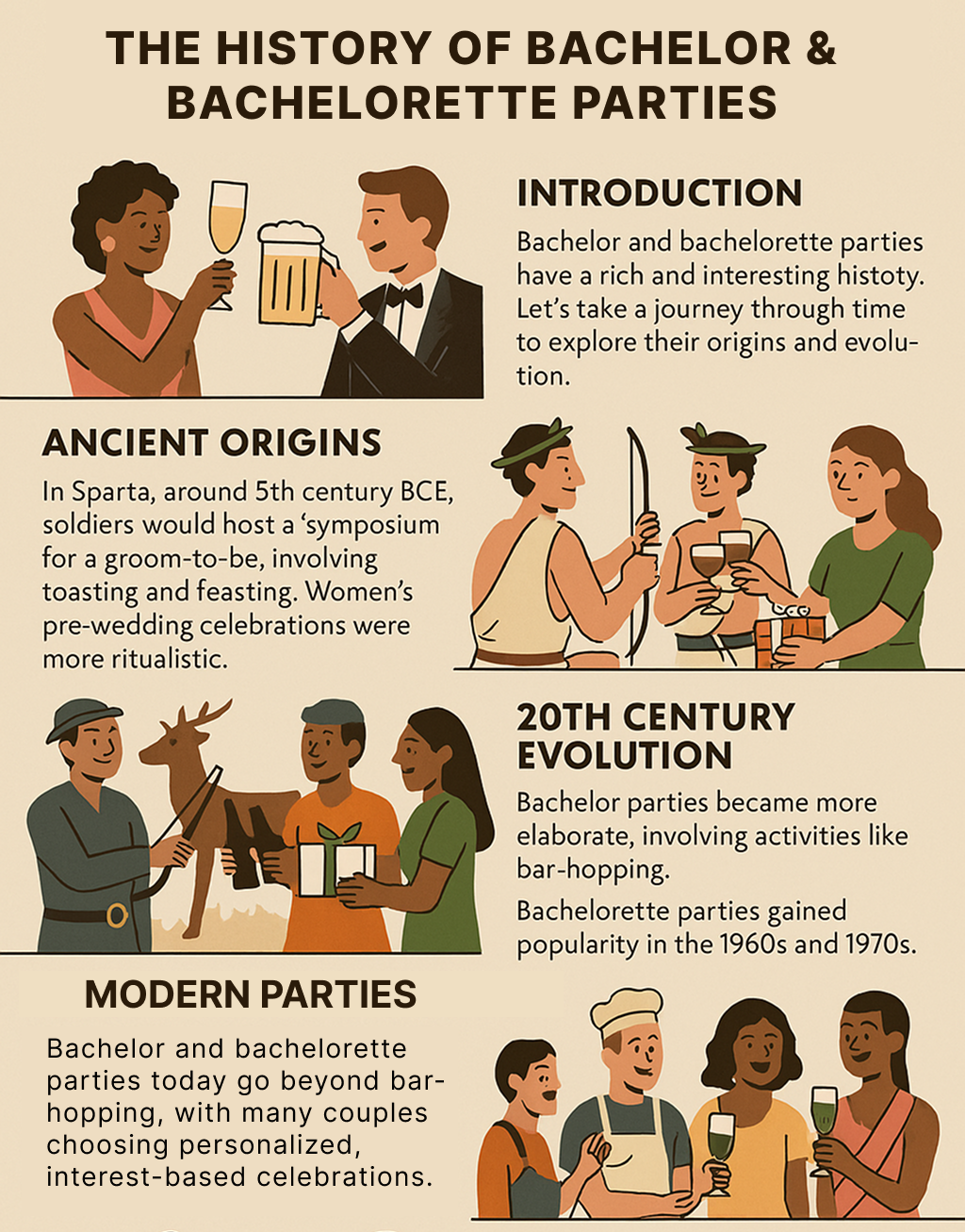History of Bachelor and Bachelorette Parties
Discover the evolution of bachelor and bachelorette parties from ancient traditions to modern celebrations, exploring their cultural significance and popular trends in Austin.
Introduction
Bachelor and bachelorette parties have become an integral part of wedding celebrations around the world. These pre-wedding festivities offer a chance for the bride and groom to celebrate their last days of singlehood with close friends and family. But have you ever wondered about the origins of these traditions? Let's embark on a journey through time to explore the fascinating history of bachelor and bachelorette parties.

Ancient Origins
The concept of bachelor parties can be traced back to ancient civilizations. In Sparta, around 5th century BCE, soldiers would host a dinner in honor of their comrade who was about to marry. This celebration, known as the "symposium," involved toasting, feasting, and sharing stories. It served as a way for the groom-to-be to bid farewell to his single life and for his friends to show their support.
While bachelor parties have ancient roots, bachelorette parties are a more recent phenomenon. In ancient times, women's pre-wedding celebrations were often centered around rituals and ceremonies rather than parties.
Medieval and Renaissance Era
During the Middle Ages and Renaissance period, pre-wedding celebrations continued to evolve. In many European cultures, it was common for the groom's friends to host a "stag night" or "buck's party." These events often involved hunting trips or feasts, symbolizing the groom's transition from a "stag" (single man) to a married man.
For women, pre-wedding traditions during this time were more focused on preparation for married life. Bridal showers, where women would gather to offer gifts and advice to the bride, began to emerge as a custom.
20th Century Evolution
The 20th century saw significant changes in bachelor and bachelorette party traditions. Bachelor parties became more formalized and often involved activities like bar-hopping, gambling, or attending sporting events. The focus shifted from a simple dinner to more elaborate and sometimes wild celebrations.
Bachelorette parties, as we know them today, began to gain popularity in the 1960s and 1970s. This coincided with the women's liberation movement and changing societal norms. Women started to embrace the idea of celebrating their last night of singlehood in a way similar to men's bachelor parties.
Modern Celebrations
Today, bachelor and bachelorette parties have evolved into diverse and personalized celebrations. While traditional activities like bar-hopping and nightlife remain popular, many couples opt for more unique experiences tailored to their interests.
For food lovers, a BBQ tour or a Tex-Mex feast might be the perfect way to celebrate. Music enthusiasts might plan their party around live music venues. Some groups choose destination parties, combining travel with celebration.
Inclusivity has also become a key aspect of modern bachelor and bachelorette parties. Many couples now opt for joint celebrations or include mixed-gender groups, moving away from the traditional separation of bride and groom celebrations.
Conclusion
The history of bachelor and bachelorette parties reflects the changing social norms and values surrounding marriage and gender roles. From ancient symposiums to modern destination parties, these celebrations have always been about community, support, and marking a significant life transition.
As you plan your own bachelor or bachelorette party, remember that you're participating in a tradition that spans millennia. Whether you choose a wild night out or a relaxed gathering with close friends, the essence remains the same – celebrating love, friendship, and new beginnings.
For more ideas on planning the perfect bachelor or bachelorette party in Austin, check out our curated weekend itineraries and party planning guide.
